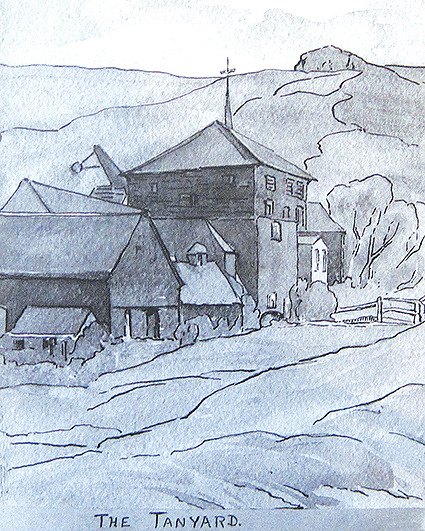Leather Workers
Thursday 29th September Leather working was part of Steyning’s story for many centuries. As long ago as the 15th century the Guild of Shoemakers and Tanners – medieval Steyning’s only trade guild –was failing to pay its bills. They were being charged five shillings a year but, appended to the manorial account for 1505, there is a revealing list of ‘Arrears’ owing to the manor. The third item on the list reads ‘£12.9s.7d for payments from the Guild of Shoemakers and Tanners in respect of foregoing years which, for 49 years preceding the last year, at 5s a year from the second year of King Edward IV [1463], which it is doubtful has ever been received.’
Leather working was part of Steyning’s story for many centuries. As long ago as the 15th century the Guild of Shoemakers and Tanners – medieval Steyning’s only trade guild –was failing to pay its bills. They were being charged five shillings a year but, appended to the manorial account for 1505, there is a revealing list of ‘Arrears’ owing to the manor. The third item on the list reads ‘£12.9s.7d for payments from the Guild of Shoemakers and Tanners in respect of foregoing years which, for 49 years preceding the last year, at 5s a year from the second year of King Edward IV [1463], which it is doubtful has ever been received.’A bit of ducking and diving seems to have been a characteristic of these early shoemakers and tanners. A court record for 1483 reveals that ‘Matthew Janson(3d) is a shoemaker and has taken excessive profit and is therefore in mercy.’ This was their way of recording that Matthew was liable for a fine of 3d. At the same court ‘Thomas Dunstall(3d) and John Spenser(3d) are dressers of white skins and have not brought their skins to market and are in mercy.’ The implication of this is that they had tried to dodge the toll due to the lord of the manor for the weekly market and had done a bit of direct dealing. William Spenser had been at it for a long time; back in 1468 his fine was for ‘using his art contrary to the form of the statute’ – a catch all phrase frequently found in the record.
The ‘dresser of white skins’ was also referred to as a ‘whitawer’; tawing being a method of treating skins which was less protracted than tanning as such. After the removal of hair and residual flesh from the hides – often with the help of urine – they were immersed in an alum or lime solution before being stretched and dried. The result was a soft and flexible whiteish leather. Tanned leather was tougher but to make it required an extended period of being soaked in pits of tannin-rich natural products such as oak bark. So an inventory for William Washer, a tanner of Steyning in 1643, notes that, apart from 92 hides and the vats in the yard, ‘there be 13 barkes at 18s. the barke’.
Tanners needed access to water but William Washer probably did not find it in the stream at the back of Tanyard Lane: it was not until the end of the 18th century that a tanyard was firmly established there. His yard, with its vats for soaking the skins in, is likely to have been close to the Singwell stream just to the south of Dog Lane. Similarly, Edward Fussell, in 1669, had his tanning stock ‘at the watter sied’ and ‘in the Alimming rome’ and when Thomas Dennett died, perhaps unexpectedly, in 1706 an inventory shows he still had ‘leather in the allum’.
Thomas and others traded in the wool derived from the sheepskins they processed and were known as fellmongers. They were prosperous men, their wealth lying not only in the wool but in skins of all sorts and conditions – lots of them; 1,780 in one instance. There were ‘buckskins in the hairs .. buckskins in oyle .. [and] buckskins in dressing’ together with beaver skins (which must have been imported) and many, many others. However, for processing these skins, their toolkits were not extensive – curved beams on which skins were laid for processing, poles on which to hang and stretch them, shears, paring knives with which to perform the highly skilled task of splitting the skins into as many as three separate layers, a grindstone to keep these knives razor sharp and lime to put into the vats.
These men had shops at the front of their homes to sell gloves and breeches made from their stocks of leather – but there were also shoemakers and saddlers selling their wares as part of Steyning’s leather working community. We will look a little more closely at these products in a later article.
Article by: Chris Tod - Steyning Museum.